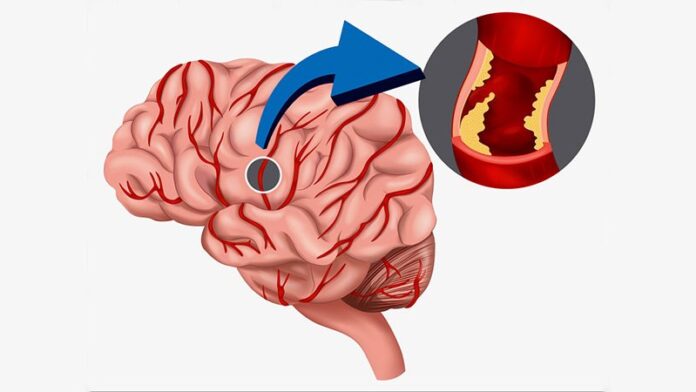[ad_1]

Dr Vasileios-Arsenios Lioutas
The real incidence of transient ischemic attack (TIA) is higher than previously reported and the subsequent risk of stroke remains highly elevated for the foreseeable future, a new study shows.
“While stroke rate after TIA has come down in recent years, which is reassuring and probably due to improved secondary prevention, it is still very high — with around 20% of individuals who have had a TIA going on to have a stroke,” lead author Vasileios-Arsenios Lioutas, MD, told Medscape Medical News.
Another finding from the study showed that the risk of stroke remained high many years after a TIA.
“It has generally been thought that stroke after a TIA is something that happens in the first few months, but our data show it is actually a significant long-term risk, with half the strokes occurring more than 1 year after the TIA, and the risk remaining elevated even after 10 years, Lioutas, who is assistant professor of neurology at Beth Israel Deaconess Medical Center, Boston, Massachusetts, noted.
“So this data is telling us we cannot relax after a TIA — action to reduce future stroke risk really is a lifelong process,” he added.
The study, using data from the Framingham Heart Study, was published online in JAMA on January 26.
In the article, the authors conclude: “Taken together, these findings suggest that patients with TIA represent a particularly high-risk group in need of vigorous surveillance beyond the early, high-risk period and with special attention to hypertension monitoring and treatment.”
The researchers believe this study is a more accurate estimate of TIA in the general population compared with other reports, as they used systematically gathered longitudinal data from Framingham Heart Study participants over almost 70 years.
“Unique features of this study include use of a population-based cohort, whereas other recent studies have been prospective registries, usually from specialized centers, so our data is a better reflection of real life in the community where it cannot be ensured that all participants have access to specialists and received optimal secondary preventive care,” Lioutas commented.
Although TIA is easily missed, Lioutas believes the vast majority of cases were picked up in this study by active surveillance monitoring.
“All Framingham participants have a biannual exam and an annual update by phone, and they are asked pertinent questions including whether they have had any focal neurologic symptoms that could have been a TIA, and all their medical records are also reviewed, so our case ascertainment was truly rigorous,” he explained. “We also had the unique opportunity to track TIA/stroke risk over time in a uniform way so we can see how rates have changed over time.”
The study also included a cohort of matched controls, who provide a comparator group to help ascertain the increased risk of stroke after TIA, and had a longer observation period than any other TIA incidence study.
The authors analyzed prospectively collected data from 14,059 participants in the Framingham Heart Study with no history of TIA or stroke at baseline followed from 1948 to 2017.
They identified 435 individuals who experienced a TIA who were matched with 2175 controls without TIA. The estimated incidence rate of TIA was 1.19 per 1000 person-years.
Over a median of 8.9 years of follow-up after TIA, 130 participants (29.5%) had a stroke. Of these, 21.5% occurred within 7 days, 30.8% occurred within 30 days, 39.2% occurred within 90 days, and 48.5% occurred more than 1 year after the index TIA.
“Overall, we found that almost 30% of TIA patients went on to have a stroke, although this figure is a blanket estimate over the whole time period studied.
“The 30% figure is higher than reported before, but we had a much longer follow up than previous studies,” Lioutas commented.
The age- and sex-adjusted cumulative 10-year hazard of incident stroke for patients with TIA was 0.46 and for matched controls without TIA was 0.09 — a fourfold increased risk of stroke in patients with TIA (adjusted hazard ratio, 4.37).
“We found individuals who had had a TIA had a risk of stroke four- or fivefold higher than controls even after adjusting for other comorbidities, and this holds through all the subsets,” Lioutas said.
Compared with a 90-day stroke risk after TIA of 16.7% in 1948-1985, the risk was 11.1% in 1986-1999 and 5.9% in 2000-2017.
“The figures show a much lower stroke risk after TIA in recent years, probably because of better public awareness and improved secondary prevention. But we are still seeing long-term stroke rates of 20% in patients who have had a TIA,” Lioutas noted. “For the period 2000-2017, our figures show a stroke rate of 6% at 90 days, 7.6% at 1 year, 16% at 5 years, and 20% at 10 years.”
Although it is generally thought that stroke after a TIA is an early event, 49% of strokes in the study occurred more than 1 year after the TIA, Lioutas reported.
He emphasized that these latest data highlight just how serious a TIA is.
“The general public also need to understand that symptoms of a TIA need to be taken extremely seriously and treated as a medical emergency,” he said. “The symptoms may resolve quite quickly so people don’t bother accessing medical help, and this is happening more in the current COVID crisis, but that can have devastating consequences. Our figures really drum this message home.”
TIA should not be ignored because the symptoms go away, he added. “Patients should receive the same work up as if they have had a full-blown stroke, with major efforts to optimize blood pressure, diabetes, cholesterol, and these need to be continued for life. Patients should also receive antiplatelet medication and a cardiac work up to assess heart disease and look for atrial fibrillation.”
Lioutas stressed that these secondary prevention measures need to be continued for life. “When we look at the cumulative risk of stroke over time, we really see how the TIA and control curves diverge more and more over time. This is very telling and highlights that we mustn’t let our guard down.”
Lioutas believes that awareness of TIA is improving among the medical profession, but he points out that it is not a straightforward diagnosis.
“By definition, TIA does not leave a signature on imaging,” he said. “It is a clinical diagnosis and some judgment is needed. TIA is characterized by focal neurological symptoms which appear abruptly, and patients are generally of older age with cardiovascular risk factors. These are the red flags. But my message to doctors is if there is any in doubt treat like it is a TIA — refer to a neurologist or a TIA clinic for a work up. Overcalling is better than undercalling.”
The study was funded by grants from the National Institutes of Health. Lioutas has reported receiving personal fees from Qmetis and serving as the continuing medical education editor for Stroke (American Heart Association).
JAMA. Published online January 26, 2021. Abstract
For more Medscape Neurology news, join us on Facebook and Twitter.
[ad_2]
Source link












